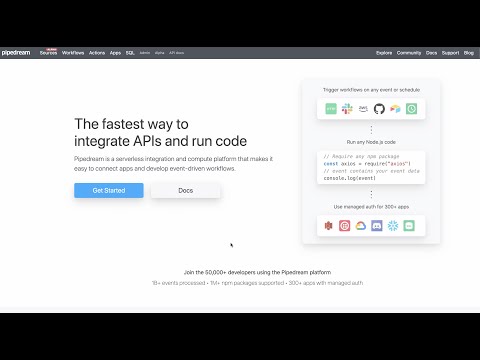What do you want to automate
with PagerDuty and Telegram?
Prompt, edit and deploy AI agents that connect to PagerDuty, Telegram and 3,000+ other apps in seconds.
Trusted by 1,000,000+ developers from startups to Fortune 500 companies
Popular Ways to Connect PagerDuty with Telegram#
Popular PagerDuty and Telegram Triggers#
Emit new event each time a new user rotates onto an on-call rotation
Emit new event each time an incident is created or updated
Emit new event each time a Telegram Bot command is received.
Emit new event each time a channel post is created or updated.
Emit new event each time a Telegram message is created or updated.
Popular PagerDuty and Telegram Actions#
Create an additional invite link for a chat, See the docs for more information
Find the user on call for a specific schedule. See the docs here
Edits photo or video messages. See the docs for more information
Overview of PagerDuty#
The PagerDuty API offers a powerful interface to automate your digital operations management. By leveraging its capabilities on Pipedream, you can create workflows that respond to incidents, automate alerts, and synchronize incident data across various platforms. PagerDuty's API enables you to manage services, teams, and incidents, ensuring that your systems remain operational and that the right people are notified at the right time.
Connect PagerDuty#
import { axios } from "@pipedream/platform"
export default defineComponent({
props: {
pagerduty: {
type: "app",
app: "pagerduty",
}
},
async run({steps, $}) {
return await axios($, {
url: `https://api.pagerduty.com/users/me`,
headers: {
Authorization: `Bearer ${this.pagerduty.$auth.oauth_access_token}`,
"Accept": `application/vnd.pagerduty+json;version=2`,
},
})
},
})
Overview of Telegram#
The Telegram Bot API allows you to build bots that can interact with users on the Telegram platform. Using Pipedream, you can automate messaging, handle commands, and trigger actions based on conversations or alerts. Pipedream's serverless execution model enables you to create complex workflows involving Telegram messages without managing any infrastructure. With Pipedream's integration, you can process inbound messages, send outbound notifications, and connect the Telegram Bot API with numerous other services to create powerful automation solutions.
Connect Telegram#
import { axios } from "@pipedream/platform"
export default defineComponent({
props: {
telegram_bot_api: {
type: "app",
app: "telegram_bot_api",
}
},
async run({steps, $}) {
return await axios($, {
url: `https://api.telegram.org/bot${this.telegram_bot_api.$auth.token}/getMe`,
})
},
})
Related Videos#
